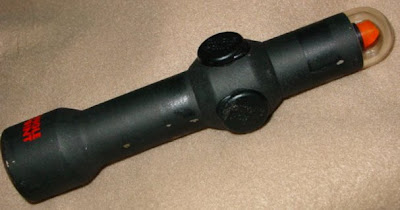The NRA Firearms Assembly Books
The NRA Firearms Assembly books are essential classics for gunsmith or tinkerer. There are two volumes, one covering pistols and revolvers
All the old favorite guns are here, plus some exotic and seldom seen ones. By including a number of oddball pieces, the books indirectly teach a lesson in firearms technology and history. There are many problems in physics and mechanics involved in making a gun, and some answers are better than others. Simpler is usually better, and some mechanisms passed over by history have indeed deserved it. But, if you happen to have a Frommer Stop, a Johnson or a Visible Loader, you may want to know how it goes together and how it works (when it does). Of value to the curiosity collector, there is a table in the back that relates some obscure arms to better known designs that are similar. You can discover, for instance, that the Chinese Hanyang is essentially a copy of the German 1888 Commission Rifle. Instructions for the 1888 are in the book and will suffice to get the Hanyang apart.
The NRA has you covered if you shoot any of the commonplace guns--Marlin, Browning, Smith and Wesson, Remington, Winchester, Savage...and so on. Often the instructions go far beyond what the factory instruction manuals call normal disassembly for cleaning. For most guns the NRA instructions take you down to single parts, pins and screws, if you are inclined to take matters that far.
 The books are of great help in diagnosing a balky gun or figuring out what parts are missing if you bought a restoration project. Also, if you need to do a deep cleaning with detailed disassembly, as would be advisable after, say, dropping your gun into a salt marsh, it's good to have a guide to the mechanical territory you're heading into.
The books are of great help in diagnosing a balky gun or figuring out what parts are missing if you bought a restoration project. Also, if you need to do a deep cleaning with detailed disassembly, as would be advisable after, say, dropping your gun into a salt marsh, it's good to have a guide to the mechanical territory you're heading into.The shooter who has only guns that are in good shape, does not expose them to hazards or abuse, maintains them per the factory manuals and has no great interest in what goes on inside them has no real need of these books. Still, that isn't everyone. Apparently not, for these volumes have been popular for years.


Comments
Post a Comment